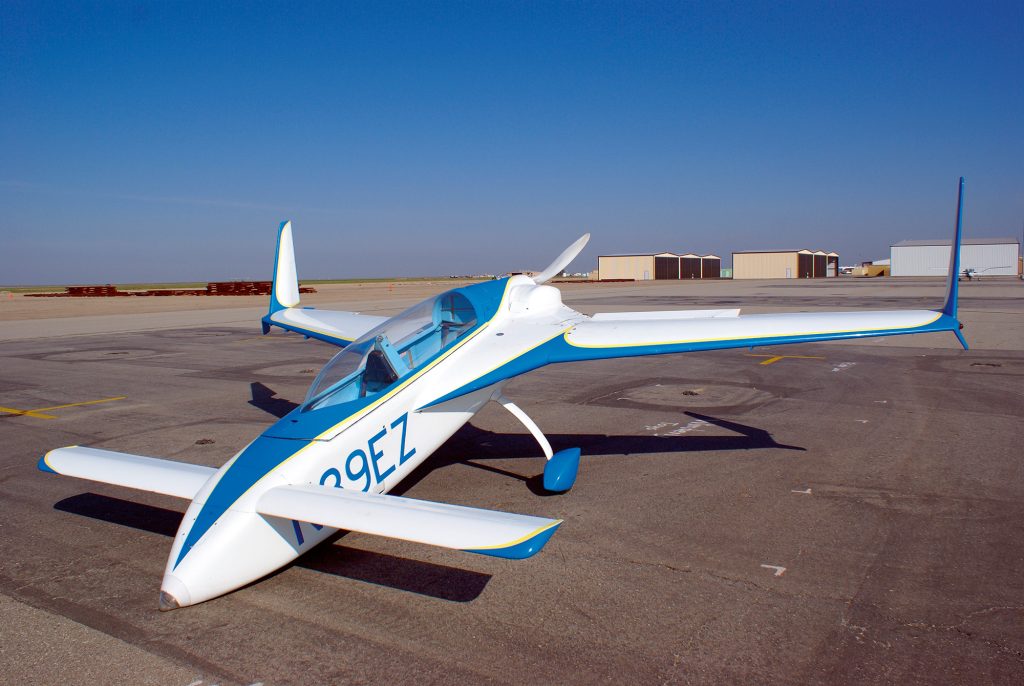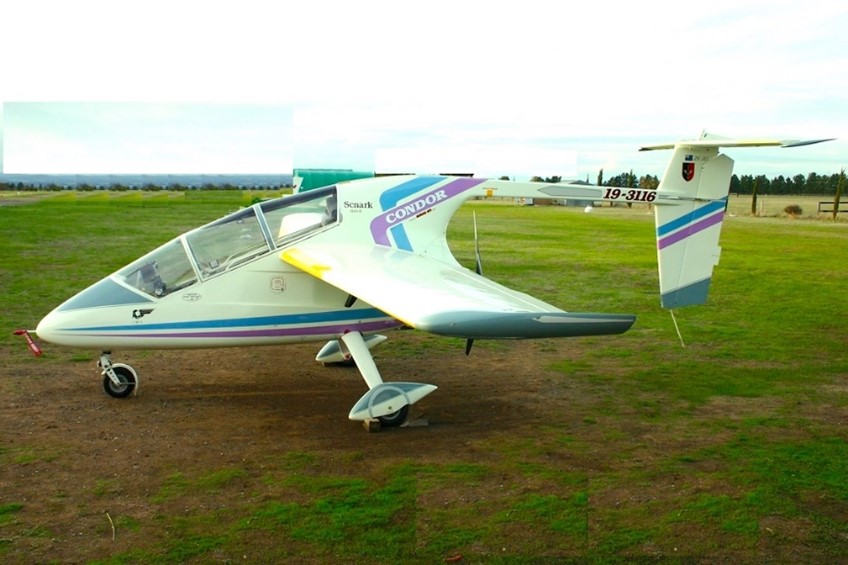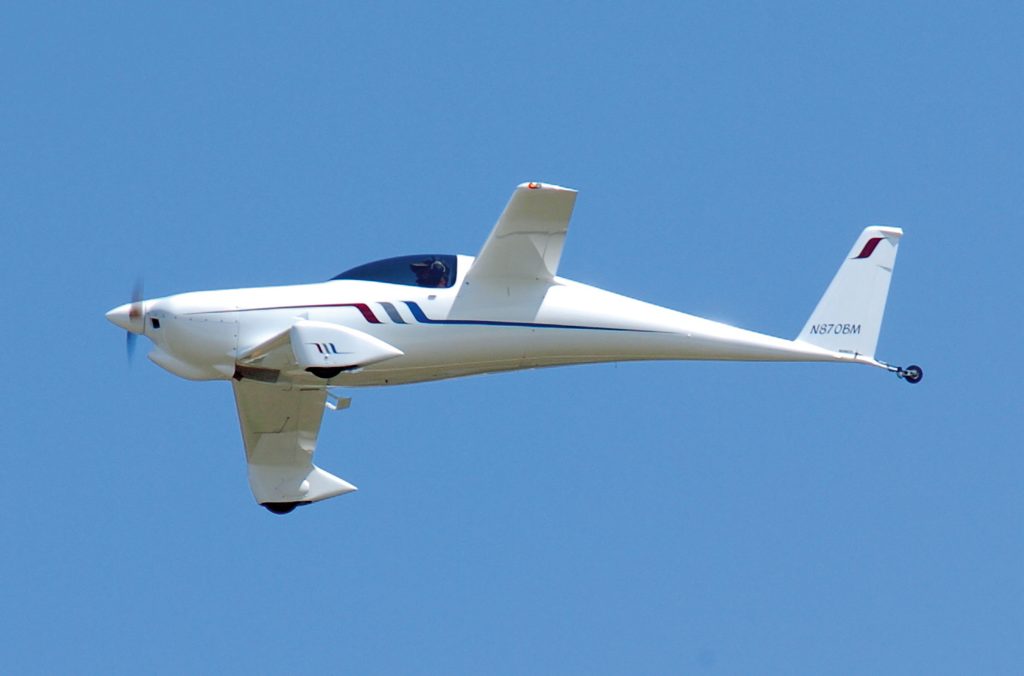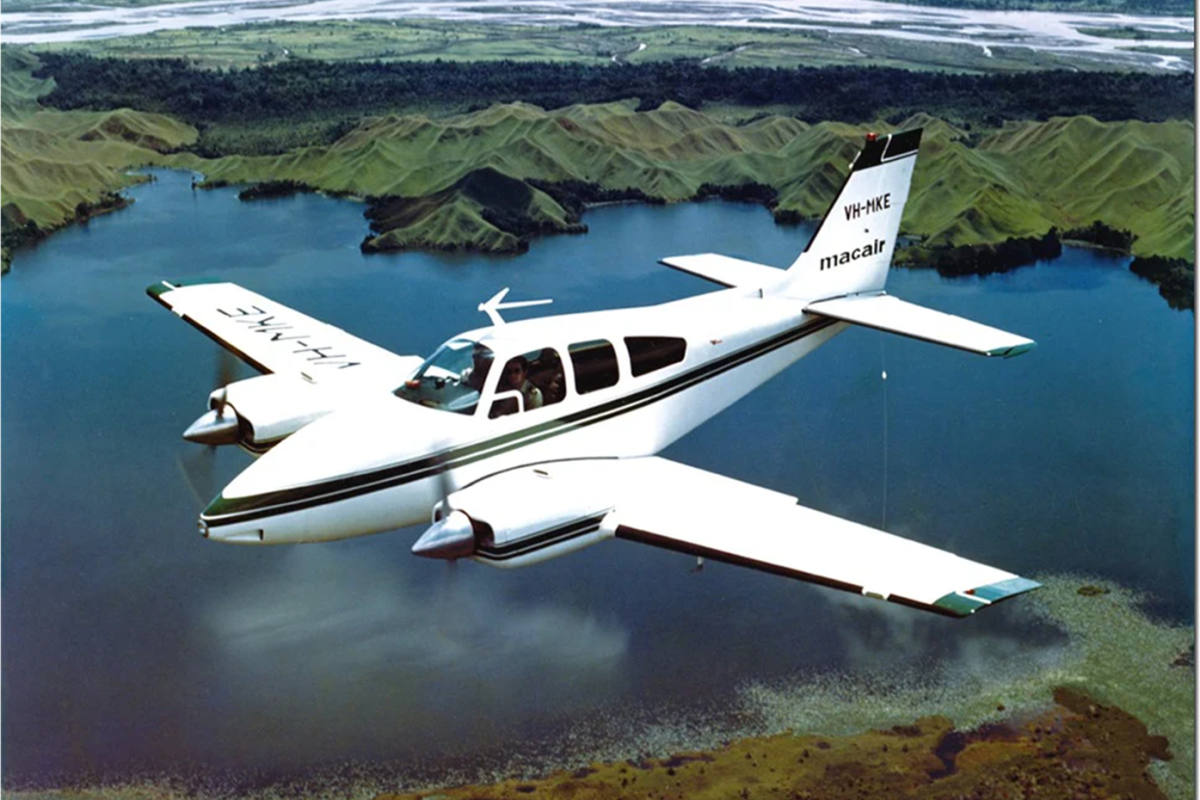EIGHT OF THE MOST UNUSUAL AIRCRAFT YOU COULD FLY WITH AN RPC
Inside almost every pilot is the child that dreams of the sky. Looking up to those canyons of clouds and wondering how it would feel to wander Gossamer Mountains. Perhaps there was the odd Superman fan, wanting to fly up there all alone, no visible means of support, or in the most minimal of craft. As a surfer in another life, I often sit gazing up and wonder how the crew in the water would feel if someone (me) came blasting out of the sky in a wingsuit, skimming to a soft landing on the face of a giant wave.
Out there, the aeronautical dreamers that conceive and design aircraft have, for 100 years or more, explored the endless variations of airframe designs that allow controlled flight. Today we look at eight of the most interesting aircraft you can fly, in most instances, with a Recreational Pilot Certificate.
1. RUTAN VARIEZE

Designed by quite possibly the most prolific and innovative aircraft designer of all time, Burt Rutan’s VariEze is a spin-resistant, stallresistant, long-range cruiser and is equipped with a Continental O-200-B engine with a pusher propeller at the rear. Its maximum speed was 170 knots with a range of 740nm from 91L of fuel. If you research Burt’s history you’ll uncover a catalogue of free-thinking genius that has the common denominator (in my view) of greatness in design. They are beautiful – and throw convention to the winds.
2. GOODYEAR INFLATOPLANE

The Goodyear Inflatoplane was conceived as a rescue aircraft, held in a hardened pod to be dropped behind enemy lines for stranded soldiers. It need only be inflated to 8 psi to be flyable, and because it was under a continuous positive inflation pressure it could withstand up to six .30 calibre bullet holes while remaining airworthy. Its range was a surprising 340nm from 20 litres of fuel, from a 30kw Nelson two-stroke engine that was a pull start from the cockpit. There’s a certain hilarity to that image, sort of like flying a blow-up lawnmower. The Inflatoplane never saw actual military service as the program was abandoned.
3. AIRKRAFT SUNNY

The Airkraft Sunny, designed by Dieter Schulz, is in many ways a fairly typical ultralight that takes a turn towards the unusual in its closed wing design. The “box wing” connects a swept upper wing with a straight lower wing, theoretically reducing drag and improving efficiency.
There are arguments running both ways on the theory, but it does have structural advantages over the more traditional cantilevered wing designs. You’ll find many examples of closed wing construction through the ages, but the idea never truly found its place in the mainstream.
4. ROWE UFO

We had to get an Australian on this list, and David Rowe is the perfect candidate. The Rowe UFO (Useless Flying Object – his description, not mine!) has gone through a few design phases over the years but has always lived up to its namesake.
This single-seat flying saucer was conceived by Rowe in the late 90s who went on to build a model and then a full-scale aircraft, powered by a Rotax 503 engine. Two more designs followed, all RAAus certified and are surprisingly easy to handle. The UFO Mk. III boasts a pull-start engine inside the cockpit, two small cargo compartments and an eye-catching Wildfire Red paintjob.
5. VERHEES D2

Designed as a comfortable and efficient traveller, this elegant example of origami actually boasts some big advantages. With a payload (325kg) greater than the empty weight of the aircraft (275kg) and a whopping 970nm range – astonishingly extendable, with some adjustment, to 2,160nm -Belgian makers Verhees Engineering may just be onto something that conventional manufacturers are missing.
A cabin width of 146.05cm, an even floor and folding seats mean the D2 is designed to be camped in when travelling, while folding wings make this already tiny plane easily transportable on the road.
6. BARBER SNARK

This interesting little plane was designed and built by Kiwi Bill Barber. Designed for high-performance, the Snark (from the Lewis Carroll poem The Hunting of the Snark, an Agony in Eight Fits) features a slim, glider-like tandem cockpit that sits in front of the 80hp Suzuki G13 engine, powering a pusher propeller at the rear.
Minimising the wetted area of the aircraft has allowed the Snark to perform surprisingly well, given its 80hp engine. Reportedly able to cruise at over 110kts, this strange design might just be the perfect pick for performance-driven aviators, that’s if you can get your hands on one of the five in existence.
7. NEMETH PARASOL

This circular-winged Nemeth Parasol might just be every STOL enthusiasts’ dream. Dubbed the “Backyard Flyer”, the Parasol was said to “land and take off within a 50-foot circle”. Designed by Steven P. Nemeth, the aircraft boasted a 125hp Warner engine, had a top speed of 135mph (117kts) and was able to safely land at a speed of just 20mph (17kts).
Nemeth stalled the aircraft mid-air during flight testing, demonstrating the ability to bring the aircraft down “almost vertically”. Despite its exceptional flight characteristics, the Parasol’s grand success in the market never materialised.
8. RUTAN QUICKIE

We’re sorry, but we couldn’t get through this list without coming back to the designs of Burt Rutan. The Quickie, a tandem wing taildragger, was Rutan’s answer to what a low-cost, single seat aircraft should look like. Sporting an anhedral forward wing and a slightly larger dihedral rear wing, the Quickie flies on just 18hp engine, to provide “more flying enjoyment for less money”. The landing gear is also unusual; a taildragger configuration with the front wheels located at the tips of the forward wing. Offered as a kit build, the QAC Quickie Q2 (a direct descendant of the original) is one of the easier aircraft on this list to get your hands on.









